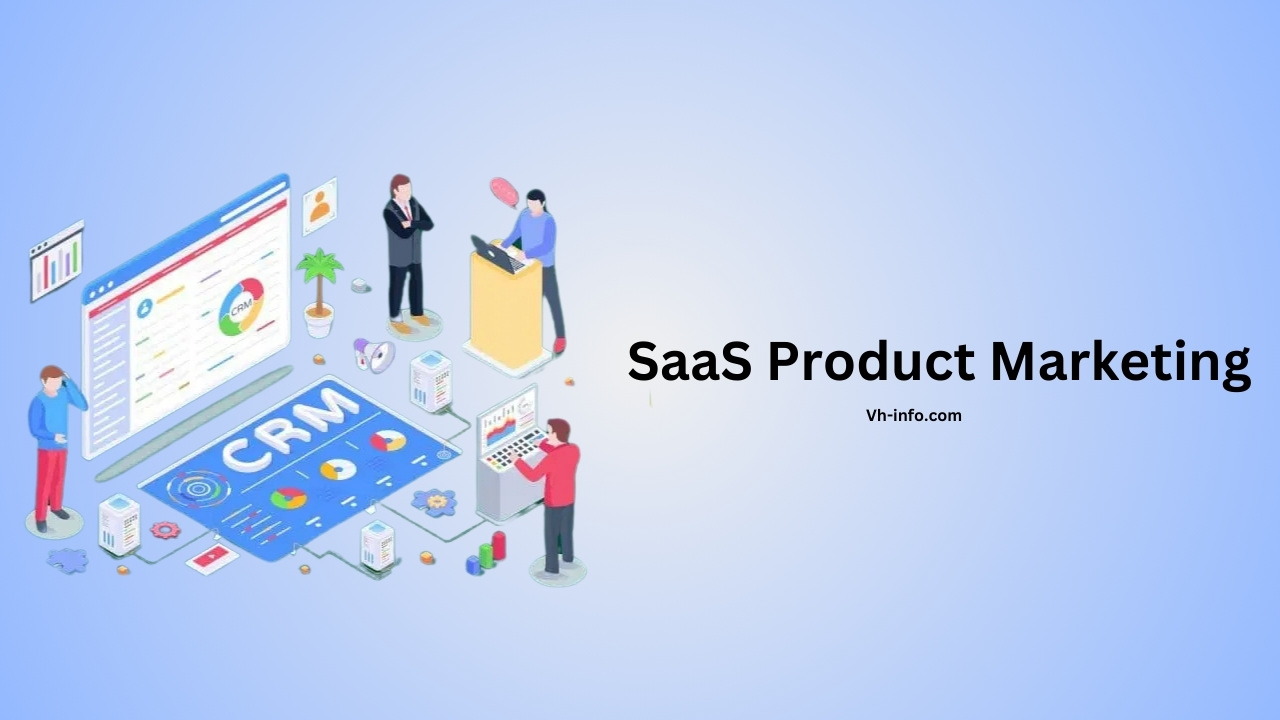SaaS product marketing has become a core focus for many SaaS companies striving to stand out in a competitive landscape. A SaaS product can live or die based on how effectively its value is communicated to the target audience.
Product marketers identify pain points, refine product positioning, and shape marketing efforts that drive customer acquisition and customer retention. The goal is to get qualified leads, turn them into new customers, and guide them along a smooth customer journey.
In this article, we share a direct, knowledgeable, and helpful set of insights to strengthen your SaaS marketing strategies.
What is SaaS Product Marketing?

SaaS product marketing involves creating and executing a marketing plan that focuses on promoting subscription-based software.
It differs from traditional marketing because it concentrates on a continuous sales funnel—rather than a one-time purchase—and emphasizes long-term customer success.
It also requires a keen focus on the entire lifecycle of a saas product, from the first step of awareness through renewal or upgrade.
Role of Product Marketing Teams in a SaaS Business
A product marketing team drives communication between the product team, sales team, marketing agency partners, and customer success departments.
Product marketing efforts align the internal and external views of a product. Product marketers convey features and benefits to the potential customer base in a concise, relatable way.
They work closely with a product marketing manager who coordinates tasks including market research, designing the onboarding process, creating a saas marketing plan, and collaborating with sales enablement professionals to create messaging for relevant channels.
Such teams also assist with marketing automation, which helps scale efforts across social media, email marketing, and other marketing channels. Product marketing teams track key metrics such as churn rate, monthly recurring revenue, customer acquisition cost, and lifetime value. By measuring success, they ensure that marketing strategies remain on track toward clear goals.
Importance of SaaS Product Marketing
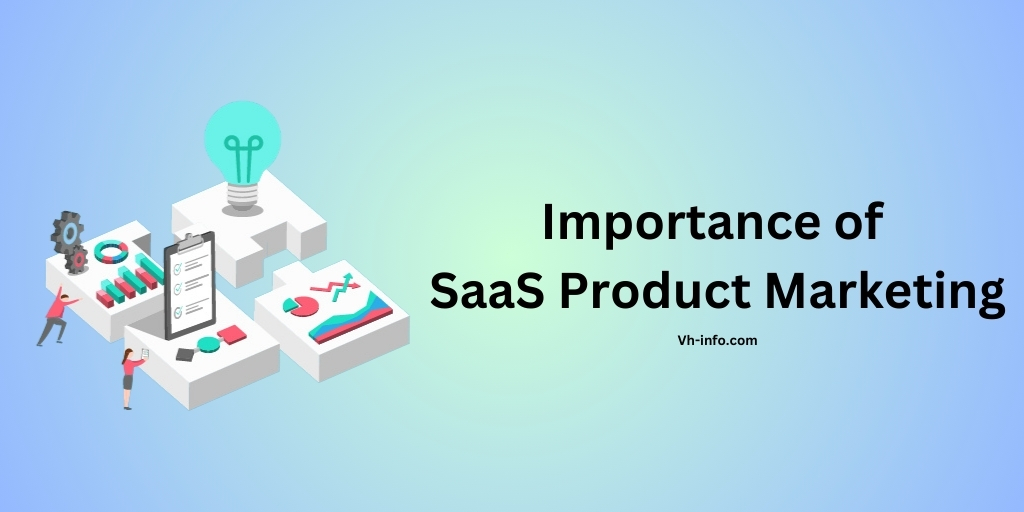
SaaS marketing plays a pivotal role in acquiring new users and retaining them throughout the entire customer journey. Unlike one-off software sales, subscription models rely heavily on recurring revenue, making customer retention a top priority.
If users do not see the continuous value of a saas product, the churn rate soars. Hence, targeted marketing efforts and best practices in promotion help keep brand awareness high, educate potential and existing users, and maintain momentum.
Also, competition in the saas industry is fierce. A well-structured marketing plan ensures you stand out by addressing specific user needs with case studies, video content, blog post insights, and a compelling landing page.
Product demos, free trial offers, and strong marketing strategies can also accelerate growth by converting more leads into paying customers.
Key Components of SaaS Product Marketing

The key components of saas product marketing revolve around addressing pain points, developing consistent messaging, and working to retain existing customers. Product marketers must create a cohesive approach to build interest, inspire confidence, and demonstrate unique value.
Understanding The Target Audience
The first step is to clarify who your target customers are. Conducting market research helps identify your ideal customer profile.
Companies often invest in buyer persona creation, which leads to clearer marketing messages that highlight benefits directly relevant to each customer. This approach increases the likelihood of generating qualified leads.
Go-To-Market Strategy
A go-to-market strategy sets the framework for how a saas product is presented to the market.
It specifies your marketing channels, key performance indicators, pricing model, and sales cycle approach. A strong go-to-market plan also outlines how the marketing team, product marketers, and sales team collaborate on shared business goals.
Defining a measurable path for lead generation across social media, email marketing, and search engine optimization is vital.
Pre-Launch SaaS Product Marketing Strategies
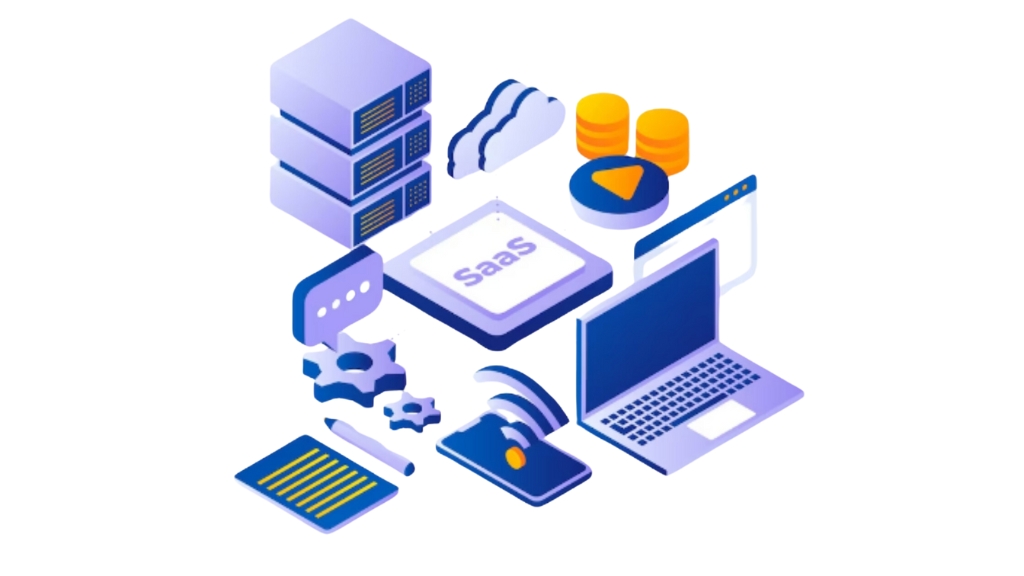
Before you roll out a new product, your marketing team must create awareness, tap into potential user pain points, and highlight the unique benefits of a saas product.
Building Awareness and Interest
Building brand awareness starts long before a product goes public. You can launch a marketing campaign on social media that includes thought leadership and relevant content on trending topics.
Running digital marketing ads or publishing a strategic blog post can attract the right target audience, ready to learn more about your offering. The aim is to secure the interest of new customers well in advance of launch day.
Creating a Value Proposition
A strong value proposition pinpoints how a SaaS solution addresses the target audience’s core needs. By focusing on the specific pain points of your prospective users, you can create messaging that speaks to their career or business goals.
In a pre-launch phase, make sure your marketing plan highlights how your software:
- Saves time for users
- Minimizes costs
- Eases daily workflows
- Offers specialized features
Proving that your software aligns with a customer’s business goals ensures that buyers see it as a valuable investment, rather than an extra expense.
Using Content Marketing
Content marketing is an invaluable way to generate buzz before your official product launch. Blog posts, case studies, and video content can educate interested readers, spark conversation, and shape perceptions.
Whether you are focusing on search engine optimization for organic traffic or distributing a blog post across social media channels, content marketing is a low-cost yet highly effective tool to boost brand awareness during the pre-launch stage.
For maximum impact, use consistent product positioning that resonates with buyer personas, while highlighting unique benefits and best practices in language your audience immediately grasps.
Post-Launch SaaS Product Marketing Strategies

Once your SaaS product hits the market, your marketing team’s job evolves from creating anticipation to sustaining momentum, driving customer retention, and laying the groundwork for upsells or cross-sells.
Post-launch, the marketing plan must guide the user onboarding process, and measure success with key metrics, and missteps need to be corrected swiftly to ensure satisfaction.
User Onboarding and Retention
An efficient onboarding process is critical to keep new users engaged. If the experience is unclear, the churn rate may spike. A friendly interface, in-app guidance, and helpful tutorials can keep the user journey smooth.
The product marketing team collaborates with the customer support group to determine user pain points that arise within the first phases. By addressing them promptly, you cultivate positive brand awareness, minimize early dissatisfaction, and preserve monthly recurring revenue.
Retention strategies should also include a free trial approach where new users get hands-on experience, reducing friction in the decision-making process. Properly executed, this leads to fast customer acquisition and fosters long-term loyalty.
Customer retention also hinges on consistent communication. Periodic check-ins, targeted email marketing, and improvements based on feedback keep users from looking elsewhere.
Customer Engagement and Feedback Loops
Customer engagement does not stop after initial adoption. Collecting feedback is an ongoing endeavor.
Surveys, user interviews, or direct outreach through customer service channels let your product marketing manager learn which features work best, what new pain points have emerged, and where upgrades or fixes are needed.
Integrating feedback loops into your marketing strategies ensures that the software evolves based on actual user requirements.
Upselling and Cross-Selling
When users are satisfied, they become prime candidates for upselling or cross-selling. These tactics expand the customer base’s total value without necessitating a new wave of lead generation.
Segmenting existing users according to their needs can help propose product add-ons or premium tiers that address advanced requirements. This builds deeper product adoption and boosts monthly recurring revenue.
The marketing team can run targeted campaigns via email marketing or social media to gently introduce new features, focusing on measurable benefits like increased time savings or stronger results.
How is SaaS Product Marketing Different From Traditional Marketing?

Traditional marketing frequently focuses on a single transaction or product sale.
SaaS product marketing, however, must nurture an ongoing relationship. A new saas product may update overnight, and a marketing campaign must keep track of new features while retaining existing customers.
Additionally, subscription models make revenue streams more predictable but also raise barriers to retention.
The continuous nature of SaaS models demands an equal focus on both acquisition and avoiding churn rates. The product marketing efforts must be agile enough to adapt to changing metrics and user feedback while creating consistent brand messaging.
How Do SaaS Product Marketers Collaborate With Different Departments?
Collaboration is a must for SaaS product marketers. They coordinate across multiple internal functions, ensuring business goals overlap and that each team receives relevant context to fulfill its responsibilities.
How Do SaaS Product Marketers Work With The Product Development Team?
Product marketers partner with development teams by relaying real-world feedback, so software updates align with actual customer pain points. They also maintain a continuous dialogue around user data, technical feasibility, and future roadmaps. This ensures that each product iteration has a clear user-focused rationale, enhancing the product positioning in the market.
How Do SaaS Product Marketers Work With The Marketing Team?
SaaS product marketers collaborate closely with the broader marketing team to plan digital strategies, produce blog post content, create sales enablement materials, and optimize lead generation sequences.
This alignment helps produce consistent messaging across multiple marketing channels.
Product marketing managers recommend angles, highlight new features, and emphasize best practices, freeing the marketing team to create relevant content for social media, search engine ads, or landing pages. This synergy keeps brand awareness consistent.
How Do SaaS Product Marketers Work With The Sales Team?
Connecting product marketing and sales ensures that potential buyers receive coherent, accurate information.
Once product marketers articulate the product’s benefits, the sales team can run effective demos, address pain points, and follow up with qualified leads. Product marketing teams also prepare data sheets, competitor comparisons, and other materials that shorten the sales cycle.
Clear alignment with the sales team improves the conversion rate from interest to purchase.
How Do SaaS Product Marketers Work With The Customer Experience/Success Team?
When new customers have trouble during onboarding, the customer success team receives immediate alerts. Product marketers stay informed about these issues, modifying product messaging or clarifying features to improve the next user’s journey.
They also collaborate on creating tutorials and email marketing flows to train or re-engage existing users. This partnership helps reduce churn rate, promotes cross-selling opportunities, and builds a strong customer base.
How Do SaaS Product Marketers Work with the Executive Leadership Team?
Product marketers hold vital market insights that inform strategic choices made by executive leadership. These insights extend to competitor analysis, potential markets for expansion, and the viability of new features.
In return, product marketers gain clarity on the long-term vision and clear goals for the software. This continuous exchange ensures that the marketing plan remains aligned with top-level business goals.
How To Create A SaaS Product Marketing Team?
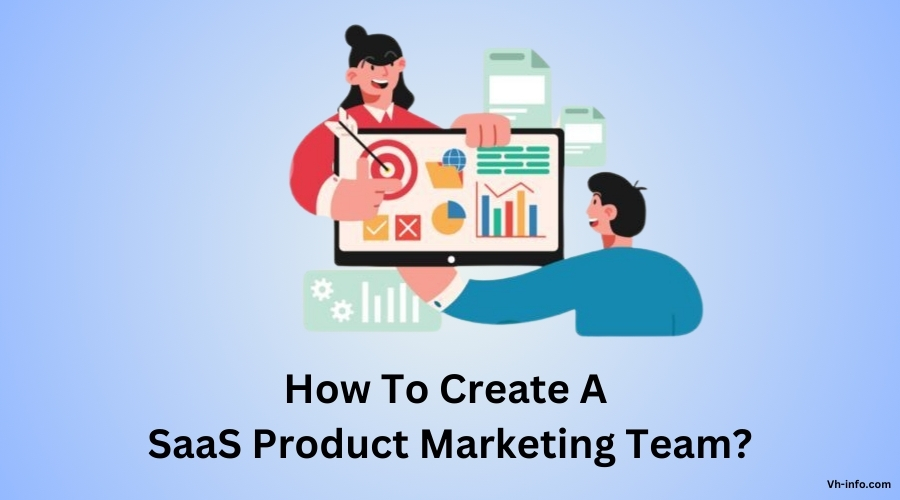
Building a product marketing team goes beyond simply hiring talented people. It demands a systematic approach to shaping workflows, defining roles, and maintaining an environment that embraces constant iteration.
Gather Customer Data and Create a Buyer Persona
The first step is to understand who your ideal customer is. Gather data about user demographics, job roles, pain points, and decision-making processes. Analyze how people stumble upon your content marketing pieces, search for competitive solutions, or interact on social media. This data shapes your buyer persona, which informs decisions about your marketing channels and marketing campaigns.
Research Your Competitor’s
A thorough competitor analysis reveals the strengths, weaknesses, and marketing strategies of products similar to yours.
Evaluating competitor landing pages, social media presences, and case studies uncovers patterns and opportunities. It also helps you differentiate your saas product marketing angle by emphasizing unique value propositions.
Define Your Marketing Channels
SaaS product marketing thrives on engaging with users through multiple touchpoints. Decide which digital marketing platforms suit your potential audience.
Some products may see better success on LinkedIn if targeting B2B customers, while other ventures find traction on Twitter or Instagram. Choosing the right marketing channels ensures you communicate where your ideal customer is most active.
Set Goals and KPIs
Without key performance indicators, it is difficult to track the success of your marketing strategies. Goals like growing monthly recurring revenue, reducing churn rate, raising customer retention rate, or lowering customer acquisition cost can anchor your decisions.
KPIs might also include new users gained within a certain timeframe, leads generated through content marketing, or the click-through rate on social media ads. Setting clear goals provides direction for your marketing plan.
Monitor Your Performance
Measuring results is essential for ongoing optimization. Product marketing teams typically track metrics like organic traffic, email open rates, conversion from free trial to paid subscription, and shifts in churn rate.
Continuous monitoring lets you pivot if certain tactics underperform. It also provides evidence for scaling campaigns that resonate best with your potential customer base.
4 SaaS Product Marketing KPI
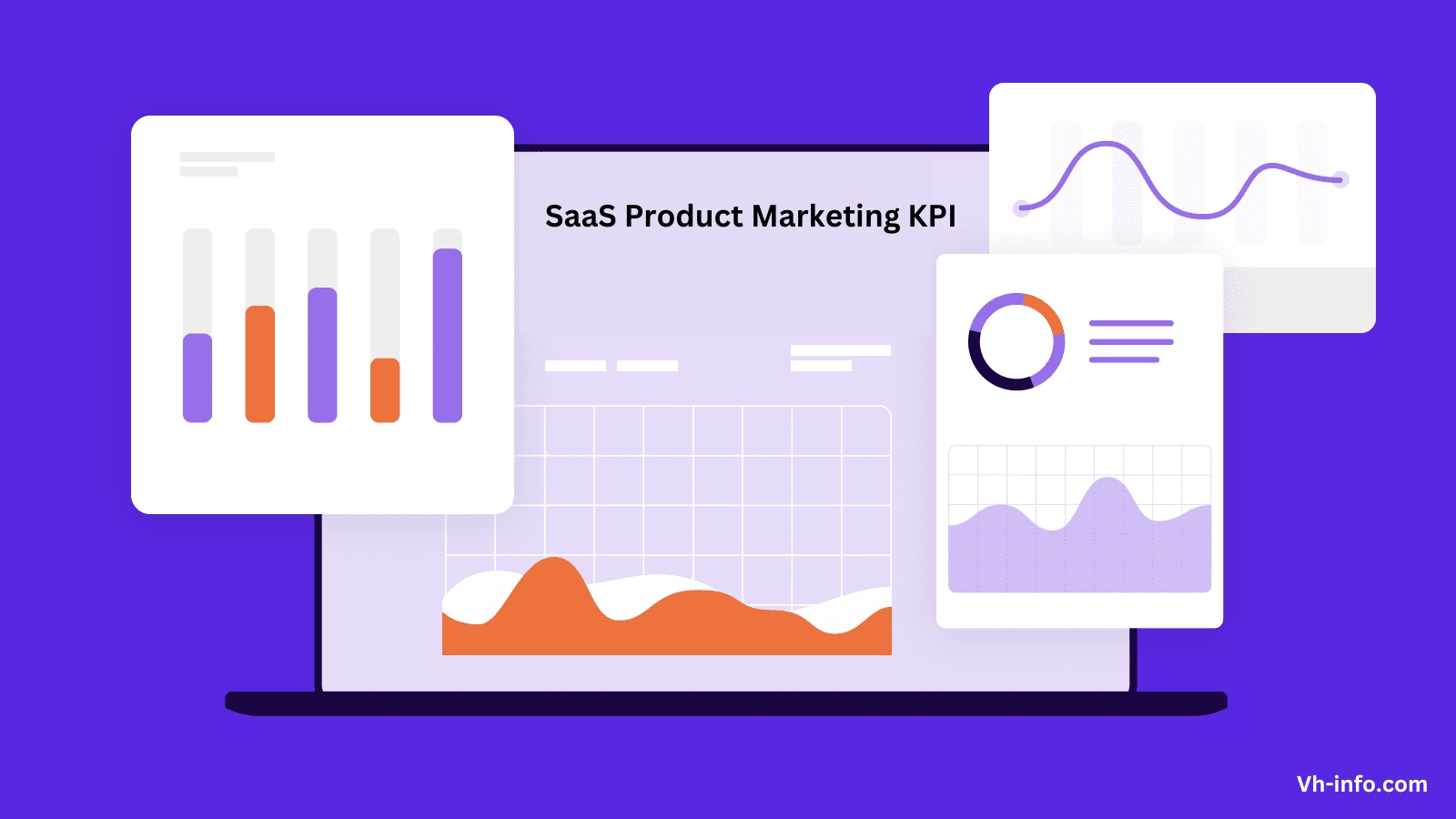
Though there are many metrics, these four key metrics capture essential elements of a strong SaaS marketing strategy.
- Monthly Recurring Revenue: Monthly recurring revenue is a foundational metric for any subscription-based business. It reflects your predictable monthly income stream, revealing whether your marketing campaign and sales funnel are translating to consistent revenue growth.
- Customer Acquisition Cost: Customer acquisition cost shows how efficiently you are using your marketing channels to convert qualified leads into new customers. If your customer acquisition cost becomes too high, you may need to streamline campaigns, refine messaging, or adjust your channel focus.
- Churn Rate: Churn rate is the percentage of users who cancel subscriptions over a given period. It has a direct impact on revenue. A high churn rate indicates that efforts to address user pain points or maintain customer satisfaction need improvement. The product marketers, customer success team, and marketing team should all collaborate to reduce this figure.
- Customer Retention Rate: Customer retention rate is the opposite of churn. It measures your ability to hang on to paying customers. Strong retention proves the product’s long-term value. High retention also grows your customer base without requiring repeated lead generation. A healthy retention rate highlights that your onboarding process and marketing strategies effectively meet user expectations.
Effective SaaS Marketing Channels

Successful SaaS product marketing commonly spans multiple digital marketing channels, using each to reach distinct buyer personas in diverse ways.
Content Marketing and SEO
Content marketing and search engine optimization are potent combinations for attracting organic traffic.
Consistency and SEO tactics, like keyword placement and link building, keep your brand top-of-mind and drive consistent traffic.
Social Media and Paid Advertising
Social media channels offer a direct route to large audiences, letting you speak directly to target customers.
Platforms like LinkedIn, Twitter, and Facebook let you showcase blog post content, product updates, and promotions. Paid advertising on these sites can boost brand awareness among targeted user groups, generating leads quickly.
Combined with solid remarketing efforts, paid ads often deliver a strong return on investment.
Email Marketing and Automation
Email marketing retains its value for nurturing leads, onboarding new users, and engaging existing customers. Automated sequences can welcome trial sign-ups, share product tips, or highlight relevant content.
If well-coordinated with product updates, you can bridge knowledge gaps promptly and address potential concerns. Automation ensures the right message is sent to the right customer profile at the right time, fostering deeper loyalty and fueling cross-sells or upsells.
Metrics to Measure Success in SaaS Product Marketing

In addition to the previous KPIs, you can gauge success through a broader set of measures.
- Customer Acquisition Cost (CAC): Customer acquisition cost is vital for understanding if your marketing spend is proportionate to results. All marketing activity—social ads, influencer partnerships, email marketing, or content marketing—contributes to CAC. Monitoring CAC helps refine campaign budgets and confirm if your marketing plan is yielding profitable outcomes.
- Lifetime Value (LTV) of Customers: Lifetime value calculates the revenue you can expect from a single user over the entire span of their subscription. This figure is extremely useful for forecasting revenue and setting budgets. If your LTV outstrips your customer acquisition cost by a healthy margin, your business is on solid ground.
- Churn Rate Analysis: Taking an in-depth look at why customer churn helps improve your product and marketing approach. Whether triggered by limited product capabilities, poor customer support, or budget constraints, identifying root causes can inspire feature updates, improved onboarding, and more targeted messaging.
FAQ’s:
How is Product Marketing Different For SaaS Companies?
Product marketing for SaaS companies involves continuous engagement with users rather than one-time transactions. Strategies revolve around retaining customers, minimizing churn, and enhancing recurring revenue.
How Do I Determine the Right Pricing Model For My SaaS Product?
Research your target audience, assess competitor offerings, and match pricing models to your product’s value. Models vary from per-user to tier-based. Sometimes, a free trial or freemium plan helps demonstrate value before people commit.
What is the Best Way to Market a New SaaS Product?
The most effective way is a multi-channel approach. Combine content marketing, social media promotions, email marketing, and search engine optimization. Address user pain points, segment your audience, and track key metrics to refine tactics.
What Role Does Customer Feedback Play in Product Marketing?
Customer feedback acts as a real-time guide for product updates and marketing messages. It highlights lingering pain points, shapes new features, and steers marketing campaigns to address user priorities.
Conclusion
SaaS product marketing requires a holistic view of the entire user journey, combining lead generation, clear product positioning, and robust customer retention tactics.
Highlighting benefits that fit the needs of your target audience, adopting a well-structured marketing plan, and fostering synergy between teams can help you establish a powerful presence in the saas industry.
VH Info encourages businesses to refine their SaaS marketing strategies, define achievable business goals, and align all marketing efforts toward generating sustainable growth.
With a balanced focus on pre-launch awareness, post-launch retention, and cooperative teamwork, a saas product can truly thrive.

